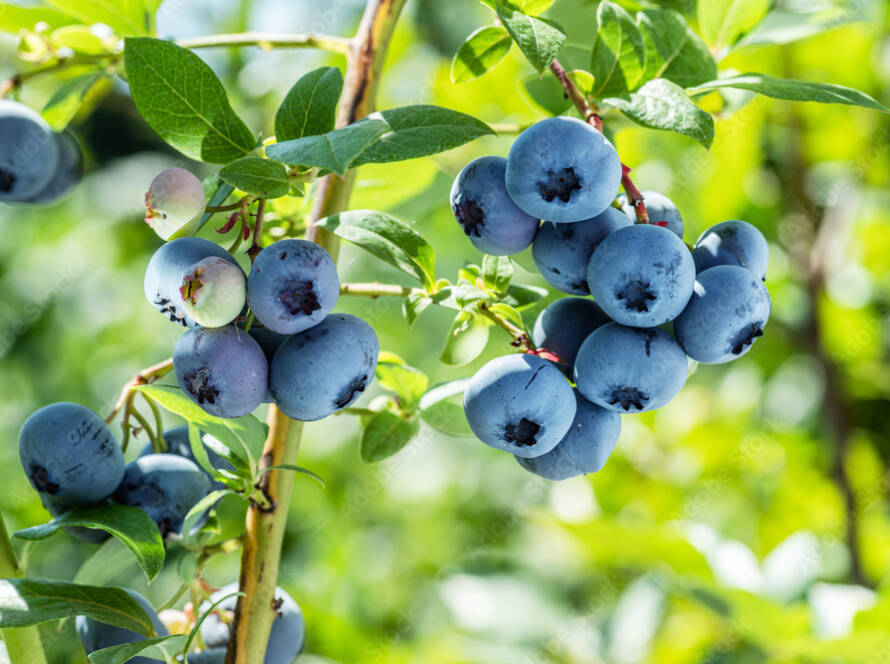PLEASE REMEMBER TO ALWAYS READ THE LABEL BEFORE USING ANY CHEMICAL
NITROGEN
Nitrogen forms protein and increases the yield of all crops. It is the essential building block of plant structure and is vital to plant growth, however it does need to be in balance with the other plant elements. Nitrogen is often leached from the soil therefore regular small applications will ensure efficient uptake without excessive losses.
Nitrogen Deficiency
Nitrogen deficient plants are yellow and stunted with the symptoms expressed on the older leaves first. In severe cases the leaves eventually turn brown and die.
PHOSPHORUS
Plants need phosphorus at all growth stages, particularly in early growth stage as it is necessary for cell division and growth within the plant. Although mobile within the plant it is relatively immobile in the soil
Phosphorus Deficiency
Phosphorus deficiency is most often manifested as purpling of the leaves, particularly the leaf veins. In severe cases the whole plant may take on a purple hue. Deficient plants lose vigour and yield poorly.
POTASSIUM
Potassium is a major nutrient required by all plants as essential for carbohydrate synthesis and transport of sugars. Second only to nitrogen in the quantities required by the plant, its main role as a regulator within the plant means it influences many other processes including assisting in maintaining proper balance of other ions, cell water content, cell turgidity and transpiration rates and the activation of many enzyme systems.
Potassium Deficiency
Although Potassium is very mobile in the plant, it is required by the crop in vast quantities which may not always be meet by availability from the soil. Deficiencies are common on light soils of low exchange capacity or soils with strong potassium fixation. High Calcium levels in the soil may also result in deficiency. Main symptoms of Potassium deficiency include:
- Reduction in plant size and general slow growth.
- Weak stalks and beaching or yellowing of leaf tips progressing inwards down the leaf
- Withering or burn of leaf tips and margins in older leaves
- Susceptibility to delayed maturity and disease
CALCIUM
Calcium is the primary building block of the cell walls and membranes without which cell division will be adversely affected, and structural stability and permeability of the cell walls will suffer. Calcium is the main transport mechanism for nutrients and boron is for the placement of these nutrients in the plant. Results show that increasing Calcium to the crop promotes longer shelf life, and reduces bruising
Calcium Deficiency
Calcium deficient leaves show necrosis at the leaf base, with symptoms first appearing on younger leaves. Plants suffering from chronic calcium deficiency have a much greater tendency to wilt.
MAGNESIUM
Magnesium is an essential part of chlorophyll structure. Magnesium plays a major role in photosynthesis and other plant functions, particularly the uptake and mobilisation of other plant nutrients, specifically Phosphorus. Magnesium is an essential part of the ATP activation process that helps energy storage in cell catalysing various enzyme systems that regulate metabolic processes.
Magnesium Deficiency
Magnesium is very mobile in the plant and deficiencies are first seen in the old leaves with inconsistent chlorosis.
Magnesium deficiencies lead to abnormal growth patterns associated with reduced yield and quality.
SULPHUR
Sulphur helps with the maximum availability and uptake of fertilizer directly through the leaf surface and root systems. Sulphur acts to increase the effective mobility of use of Zinc, Manganese and Copper within the plant.
ZINC
Zinc forms the enzyme which produces carbon dioxide and maintains CO2 levels for photosynthesis. Zinc plays an important role in the production of auxins. Zinc also plays a major role in the metabolism of nitrogen into proteins and essential amino acids
Magnesium deficiencies lead to abnormal growth patterns associated with reduced yield and quality.
Zinc Deficiency
Zinc has poor mobility in plants which generally leads to Chlorosis, Stunting, Dieback, Rosetting, Small irregular leaves and reduced yield.
IRON
Iron is of key importance in the formation of chlorophyll essential for photosynthesis. It also plays a major role in the various enzyme activity and energy transfer functions involved in respiration and nitrogen fixation.
MANGANESE
Manganese is essential as an enzyme activator which helps with Nitrogen assimilation. It is also primarily involved in photosynthesis and chlorophyll production.
COPPER
Copper activates several enzyme systems and particularly influences the formation of chloroplast proteins. These proteins are essential in cell wall formation & photosynthesis. This in turn affects the physical strength of the plant stems and shoots.
BORON
Boron is a trace element that is essential to many functions of the plant. It is actively involved in the transportation of sugars across cell walls, and in the synthesis of cell wall material and the regulation of water within the cells. Boron is also closely linked to the reproductive process of the plant in the production of pollen.
MOLYBDENUM
Molybdenum is essential for the formation of enzymes required in the plants use of nitrogen, helping to transform nitrate nitrogen into amino acids and for nitrogen fixation.



